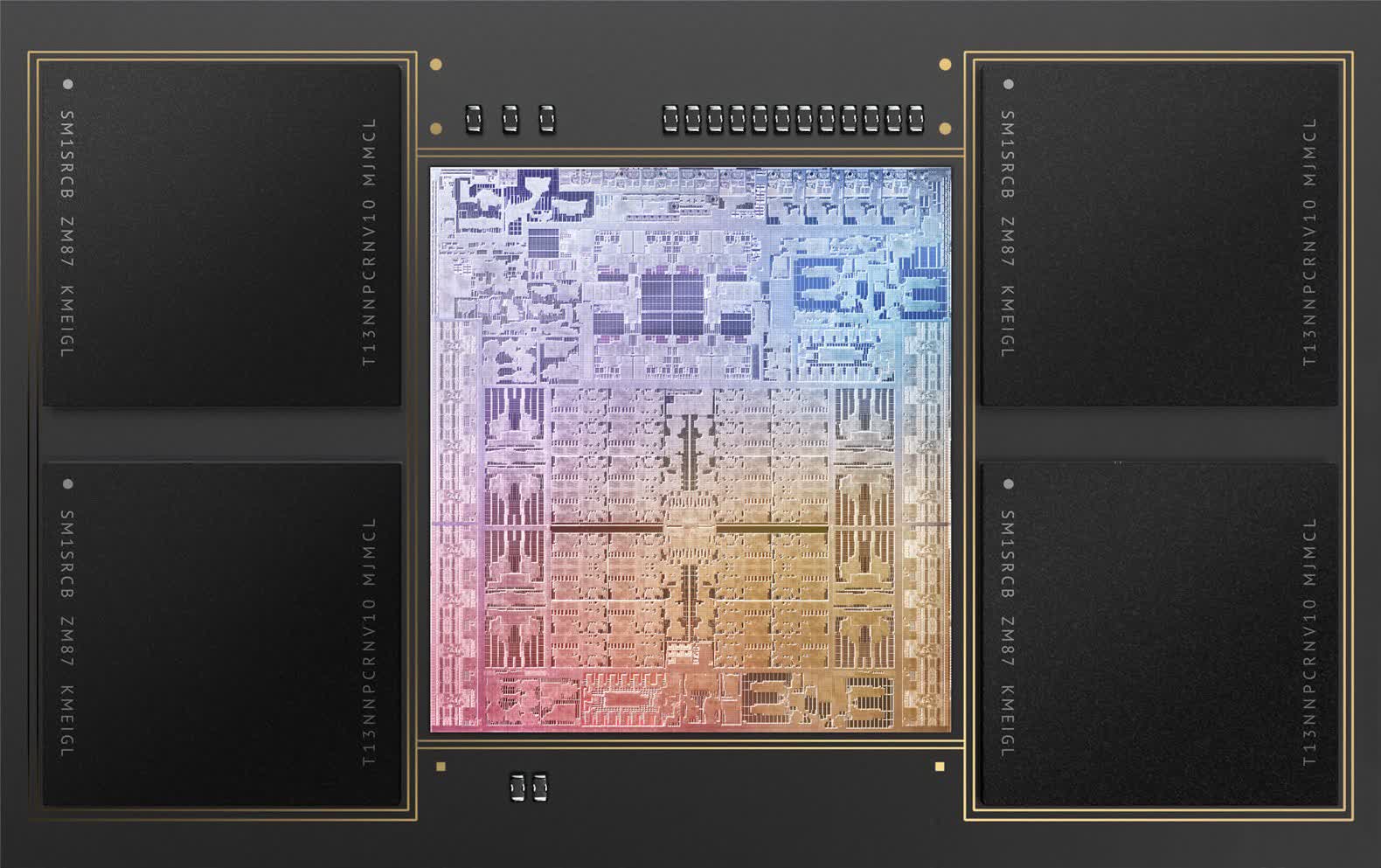Rumor mill: Apple’s latest silicon, the M1 Pro and M1 Max, have barely come off MacBook Pro assembly lines, and rumors are already circulating about what’s next for Apple silicon. Rather than going back to the drawing board and designing chips with even higher specs, why not just knit two Max SoCs together?
As you are probably aware, Apple vowed to completely ween itself off of Intel components by the end of next year. So far, it is right on track. The MacBook Air, 13-inch Macbook Pro, Mac mini, and the 24-inch iMac are already sporting M1 silicon, and Apple just unveiled the redesigned 14- and 16-inch MacBook Pros with their next-generation M1 Pro and M1 Max chips. That only leaves the 27-inch iMac and the Mac Pro workstations still on the Intel nipple. Surely this will change next year.
Noted Apple leaker Mark Gruman says Apple plans to power the Mac Pro with dual M1 Max SoCs (M1 Max Duo) on the base models and four (M1 Max Quadro) on high-end units. That’s a minimum of 20 compute cores and 64 graphic cores with up to 128GB of RAM and double all that for the Quadro.
For those who think the M1 Pro and M1 Max in the MacBook Pro are impressive, the new Mac Pro desktop is expected to come in at least two variations: 2X and 4X the number of CPU and GPU cores as the M1 Max. That’s up to 40 CPU cores and 128 GPU cores on the high-end.
— Mark Gurman (@markgurman) October 18, 2021
Hector Martin, who is in the process of porting Linux to M1 Pro/Max Macs, indirectly backs up Gruman’s claims with evidence he discovered in macOS.
“The macOS drivers have plenty of multi-die references, and the IRQ controller in the M1 Pro/Max is very clearly engineered with a (currently unused) second half for a second die,” tweeted Martin. “For the technically minded: it’s a second set of config/mask/software-gen/hw-state registers, and the hardware inputs are all idle but you can software-gen IRQs in that block just fine and they get delivered with a die-id of 1 in the top 8 bits of the event register.”
As far as cost, speculation is that top configurations will run an eye-watering $50,000 or more, but that is not surprising since buyers can configure the current Intel-based Mac Pro to cost nearly $55,000. That said, low-end units should start within the $6,000-$6500 price range.
Gruman only spoke of the Mac Pro receiving the Duo and Quadro silicon, so that just leaves the 27-inch iMac sporting Intel chips. However, Max Tech host Vadim Yuryev says there is strong evidence that Apple will use an M1 Max Duo in the larger iMac variant (video above). He points out that simply using a single M1 Max would be a downgrade from current Intel-based iMacs.
Designing a whole new chip is a possibility. Rumors are already circulating that a 40-core M2 chip is on track for 2023, but that falls beyond Apple’s deadline for ditching Intel. Yuryev is convinced that it will probably use binned and unbinned M1 Max Duos for prosumer and professional configurations, respectively, rather than a whole new die. He suspects Apple to reveal the next iMacs as early as March of next year. Again, this falls in inline with Cupertino’s roadmap for silicon independence without sidelining the M2 predictions.







